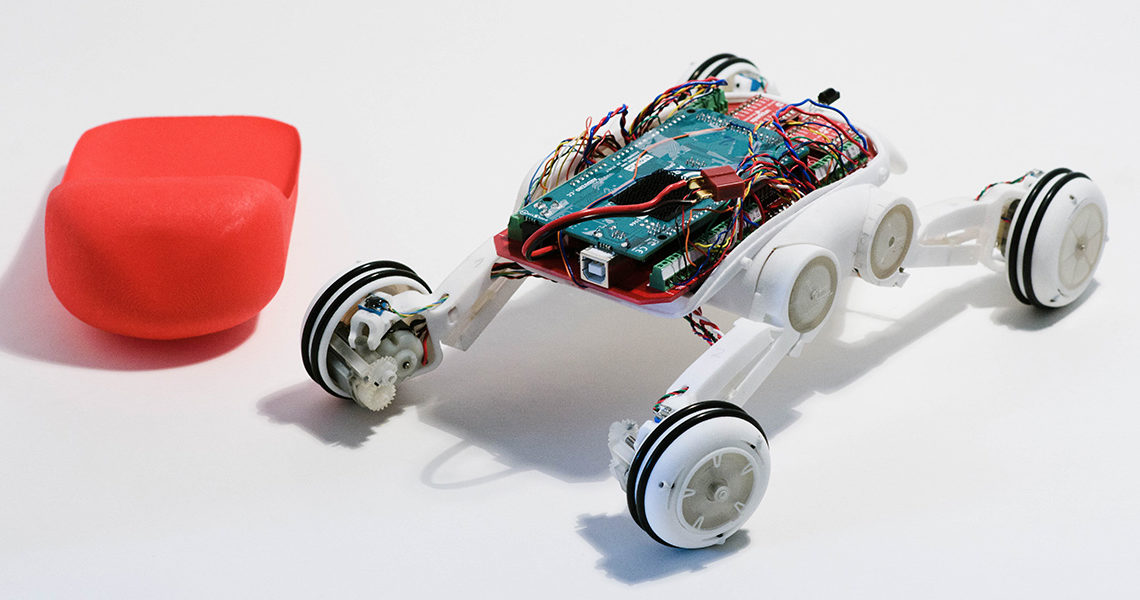
Universities all over the world are at the forefront of 3D printing innovation. There are endless ways 3D printing can be used to reinforce learning, as a tool to demonstrate concepts and to develop real world ideas and solve problems in any area of study.
Illustrating Complex Concepts
One of the biggest uses of 3D printing in University classrooms is to print models as visual and tactile learning aids. Ognjen Miljanic, a Professor at the University of Houston 3D printed large scale models of crystal molecules that would typically be too small to see with a naked eye. This allows for more information to absorb faster than with two dimensional models or text explanations in any area of study.
Prosthetics
Duke University’s eNable, a club made up of engineering students, work to create dynamic prosthetics for three different recipients per school year. Starting with open source files such as Unlimbited Arm, K1 Hand and Gripper Thumb Hand they modify the designs to be appropriate for each specific recipient. For Brooke, a pharmacy school graduate, students modified the grip between thumb and index so that she could pinch skin for subcutaneous injections. Many other Universities are using 3D printing to create prosthetics, as a way to both give back to their communities and continue innovating in the field.
Robotics
3D printing typically serves to create parts and prototypes in robotics and engineering but students at the Wyss Institute at Harvard University used a multi-material printer to create an entire soft-bodied jumping robot. They used a nine layer material transition from rigid core components to soft exterior components in a single print session. This results in a high level of durability that allows for the improvement of a wide range of robotic and engineering designs.
Paleontology
When 45% of the Dreadnoughtus schrani dinosaur’s bones were uncovered between 2005 and 2009 by professor Dr. Kenneth Lacovara’s team from Drexel University, a virtual mount of the dinosaur’s skeleton was created by 3D scanning each bone. Using these 3D scans, a doctoral candidate Kristyn Voegele from the Drexel College of Arts and Sciences joined with the College of Engineering to 3D print models of the dinosaur’s bones and muscles to further study how the Dreadnoughtus schrani moved. The use of 3D printing makes crucial improvements in the way extinct creatures can be studied because it allows them to be explored in a physical context, rather than simply digital.
Art
Noah Gunther from Lawrence University integrated 3D models and a 3D environment he created to produce an installation called Mystery Ocean that deals with the area between our physical world and the computer world.
Creating Accessibility to 3D Printing Technology
The Technical University of Berlin recently opened a 3D printing cafe that is available for use to help students and non-students alike familiarize themselves with 3D printing technology. The cafe uses mostly recyclable raw materials to maintain sustainability and be as environmentally friendly as possible.
Optimizing the 3D Printing Process
The use of 3D printers in universities also gives students an opportunity to improve the process themselves by making the devices run more efficiently. At MIT, researchers replaced the pinch-wheel design on a desktop 3D printer with a screw design that pulls the textured filament to the printhead faster than any other printer on the market. This assures that the technology will continue to improve to make printing faster and more efficient to industries that rely on it.
These are a fraction of the projects utilizing 3D printing in Universities and the presence of this technology can only expand and open new avenues of innovation in future generations of students. Learn how Shapeways can help you with your education projects.


